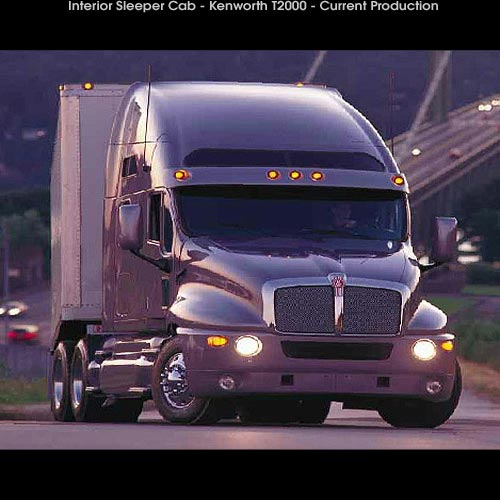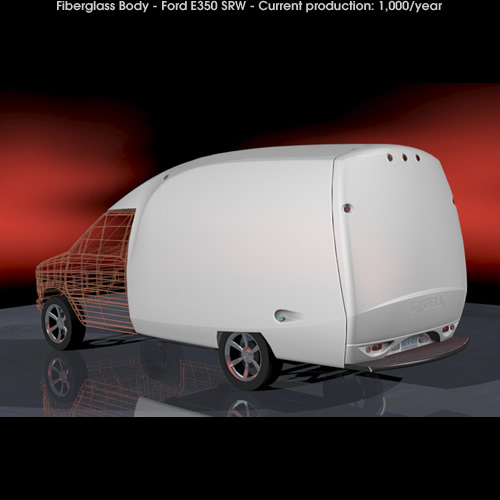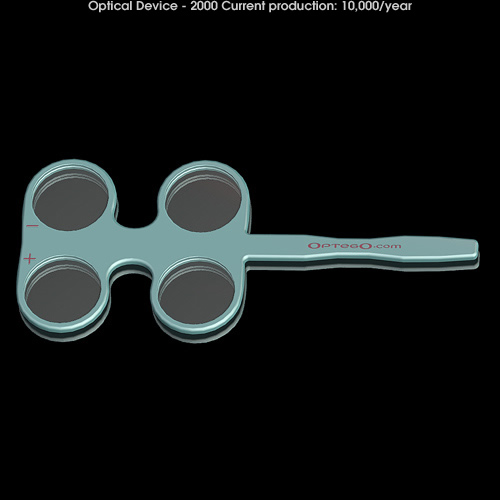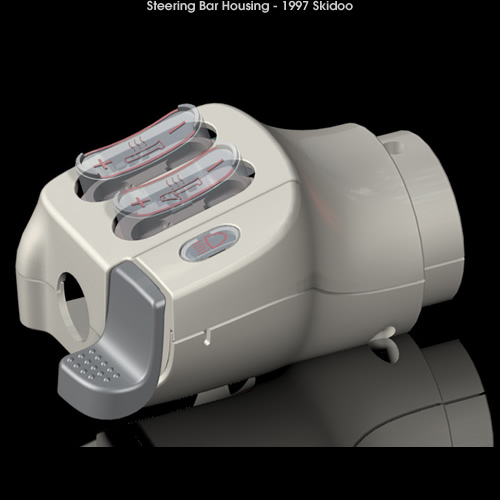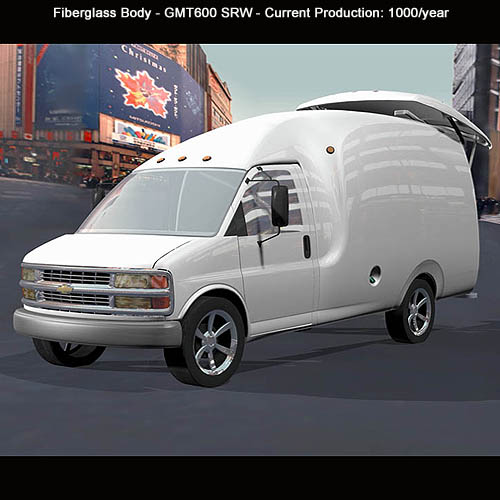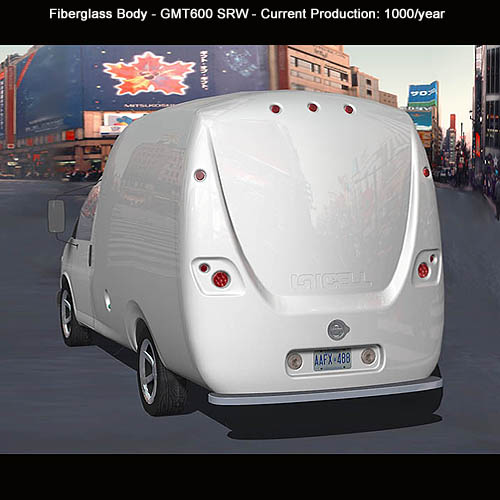|
Spacious
Aerocell cheats wind, parks in a standard space.
There's
a new Canadian truck on the roads. That's right -Canadian. Not just
assembled here, it was conceived, designed and built in Toronto. The
Unicell Aerocell SRW has brought automotive style and aerodynamics
- and a few other tricks - to the traditionally boxy cube van. Handy
for moving your stuff or for small businesses, cube vans offer the
most walk-in space in a regularly licensed vehicle. Hence the name
cube, as in cubic capacity. Traditionally, cube vans have been the
proverbial box on wheels. Out in front of the big square box is the
cab of a pickup or van, such as the Ford Econoline or GM's G-van sold
as the Chevy Express and GMC Savana. (Dodge stopped making such versions
of its Ram Van years ago.) They are called cut-away vans because the
partially completed chassis looks like that when it is shipped from
the manufacturer's factory. Subsequently, a body builder completes
the vehicle with the addition of a box on the back. That's where the
Toronto connection comes in.
DEL
Equipment has been putting equipment on trucks since the end of World
War II. Founded as Diesel Equipment Limited in 1945 by Canadian Army
engineer Jack Martin, it has put its three letters in a yellow oval
on literally millions of trucks with specialized bodies. More than
20 years ago, DEL bought a neighboring fiberglass boat builder and
eventually started making single-piece truck bodies.
|
Today,
Unicell and DEL are run by the next generation of Martins, Roger and
Paul, and there are DEL operations in the U.S. and the U.K. plus distributors
in Australia and South Africa. In North America, the company is the
sole producer of fiberglass cube vans. Other cube vans are built from
riveted aluminum or fiber-reinforced plastic panels in a frame. Unicell
is also now making bodies for a recreational vehicle (RV) maker and
amusement rides. At the Toronto factory, the most impressive sight
is the garage-size moulds and robot-like jigs that apply most of the
fiberglass - all of which were designed and built by the company itself.
A few years ago, the company noted strong demand for small cube vans
with single rear wheels, particularly in Quebec and the States. They
had made a semi-aerodynamic version of the larger, dual-rear wheel
model, but the company wanted to do more than simply bulge the front
of the square box. So, a couple of Toronto consultants were brought
in.
Stylist
Davide Tonizzo, of Design D, was born in the city but cut his design
teeth in the automotive design studios of his ancestral homeland of
Italy. He put the new look on paper, and Karel Caslavsky of
C-Tek Consulting Inc. digitized
it for the computer modeling.
The
new Aerocell SRW is more than just slightly aerodynamic. It is a whole
new shape that also features an innovative rear door - instead of
a large roll-up or double barn door style common to delivery vans,
|
Unicell
created a double hinged set-up like those used on aircraft doors.
With simple horizontal springs like that of a garage door, the large
clam- shell rear door pops out slightly and slides up out of the way,
requiring less than 24 in (0.6-metres) of lateral space behind the
vehicle. That compares to 36 in (0.91 m) required for a traditionally
hinged 1996- 2000 Dodge Caravan rear hatch. It opens easily from the
outside and can be opened from within, with a bit of a push. Closed,
it seals uniformly around the entire metal-reinforced opening for
a water- and wind-tight fit.
Open,
it is easily closed with the hanging strap. A grab handle on each
side of the opening is integrated into the body. The slightly higher
than normal bumper step height prevents the loading and unloading
from being completely easy. There is ample stand-up room inside, while
natural illumination is provided by the translucent skylight in the
roof. Over the cab and under the roof fairing is an additional storage
area with a lipped edge to secure smaller items. Below, a small sliding
door provides access to the cab. That door is typical of traditional
cube van construction with a loose fit. Between the van cab and body,
the inside trim also shows some ill fitting trim. The only other less-than-perfect
fit was the gap in the rear door seam, which narrowed to almost touching,
and should just be a matter of trimming the fiberglass edge of the
door.
Otherwise,
the body is well built. Plastic panels fine the inside covering the
rough side of the fiberglass.
|
The
11.5 ft (3.5 meter) plywood floor has more than 4 ft (1.2 m) between
the walls over the single rear wheels. The improved aerodynamics of
this new Aerocell SRW should result in improved fuel economy. Its
users have reported 15-18 per cent reduced fuel consumption, says
Unicell chief engineer and vice-president, Scott Vader. Unicell's
fiberglass construction is, of course, impervious to rust.
The
better aerodynamics of the SRW also improves the vehicle dynamics
with quieter driving. The buffeting effect from winds and other large
trucks passing by is reduced dramatically. Despite the large box,
the overall length is quite tidy, thanks to the standard-length wheelbase.
The single rear wheel keeps the width close to a regular production
van. Thus, the Aerocell SRW fits into a standard parking spot just
like a regular van or pickup truck. Only the Ford steering lets down
the driver of this vehicle. It is vague and requires an alert touch.
The power of the gasoline 5.4 L Triton V8 engine is more than sufficient
to accelerate the Econoline underpinnings into highway traffic, even
with a load on.
Price
is about $30,000 ($7,900 plus the chassis at $21,595 or $22,180 with
options).
Freelance
journalist Paul Fleet is Wheels' truck reviewer.
E-mail: pfleet@idirect.com

|


